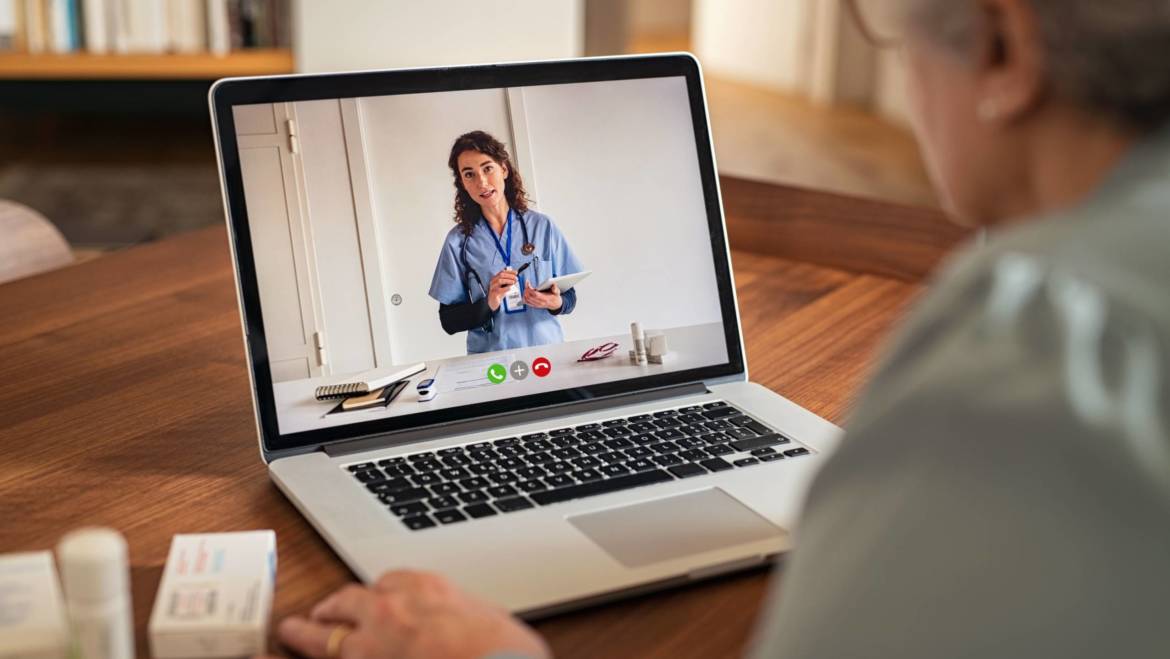Telehealth has long been on the rise in American health care — gradually becoming more common in fields such as behavioral health and dermatology, with innovative applications in less expected areas like virtual intensive care unit (ICU) support. Before the pandemic, however, it lacked the structure, funding, and patient demand to expand more rapidly.
“For a long time, telemedicine tended to remain a task for another day behind a list of more pressing issues,” says Dr. Amy Crawford-Faucher, vice chair, Primary Care Institute, and medical director for telemedicine at Allegheny Health Network (AHN). “But when the pandemic came, we rose to the level of demand.”
“It took COVID-19 to kick telemedicine into high gear,” agrees Kayla Cousineau, AHN’s vice president of clinical operations and strategic initiatives. “High gear” is an understatement: Cousineau says that AHN’s nearly 500,000 virtual visits in 2020 represent a 4,000% increase over 2019 telemedicine volume.
Long-term adoption of telemedicine
Dr. Crawford-Faucher says that the ramp-up of telehealth services at the start of the pandemic had everyone running on adrenaline, whereas “now we’re moving into a marathon mentality.”
Despite the availability of vaccines, it is difficult to predict the longevity and impact of COVID-19 as a public health threat. When it comes to telehealth, one question is how long COVID-19 will continue to motivate people to prefer virtual over in-person visits. Another question is whether people’s experiences with telehealth now will create a lasting rise in demand even when the pandemic is no longer a factor.
Cousineau says that once select AHN offices began opening in May and June, it was no surprise that the percentage of virtual appointments decreased. For much of the year, it has been hovering around 15%, which she describes as “on par with the rest of the nation.”
That’s still higher than pre-pandemic levels. But Cousineau says it is also valuable to look at the use of telehealth across different institutes and specialties.
“For instance, a group like behavioral health is still seeing 80%+ virtual engagement,” she explains. “And that may not change much moving forward.”
Another important piece of the puzzle for longer-term adoption of telemedicine involves reimbursement and government regulation. Historically, providers often lacked incentive to advance telemedicine in some areas because payers, whether private insurers or government programs like Medicare, didn’t cover them or covered them at lower reimbursement rates. In response to COVID-19, that has changed: As part of the public health emergency, the Centers for Medicare & Medicaid Services (CMS) added more than 130 virtual services to their list of coveragePDF File, expanding the list to 144 services in the fall. Even more notably, they added many of the services to a Category 1 “permanent” coverage list for 2021. What CMS covers usually has significant influence on how commercial payers adjust their coverage as well.
“Everything the government has said has at least alluded to the fact that telehealth is here to stay,” Cousineau says. “They might not continue to cover all the additional services that were added as part of the public health emergency, but the situation will lead to some permanent changes.”
In terms of what is on the horizon for telehealth, Dr. Crawford-Faucher says that expanded use of Remote Patient Monitoring (RPM) tools are a potential game-changer. These tools allow patients and providers to access real-time observation of key biometrics. For example, a patient might receive some type of Internet-connected device, like a blood pressure cuff, that records data and sends it to their physician, alerting them if findings indicate a serious issue.
As Dr. Crawford-Faucher points out, if RPM tools allow her to look into a patient’s throat and ears, check heart rate, get an accurate blood pressure, and collect other important data, that brings a virtual visit much closer to what happens in the office, while streamlining the entire process. It also opens up exciting possibilities to have more meaningful interactions with patients outside of just a traditional annual office visit, or a visit that happens because something is wrong.
“The data provided by RPM tools, combined with telehealth options for quick, easy communication, give us the opportunity to reach out more often in an informal way and positively affect a person’s health,” she says. “It means more access points to care for patients.”
That fits well with the organization’s long-term strategy of building a new, technology-enabled, highly personalized platform for patients and clinicians as part of its Living Health model.
Cousineau says that the impact on patients remains the central focus. “What the telehealth expansion has shown is that it’s possible to work together quickly to make a massive fundamental change for the good of our patients,” she explains. “That isn’t limited to the pandemic — we’ll continue to look at how technology can better support a person’s health and strengthen the relationship between patients and clinicians, and then figure out what challenges we need to overcome to make it happen.”
This post is brought to you by Highmark Insurance; you can read the original on their website.

